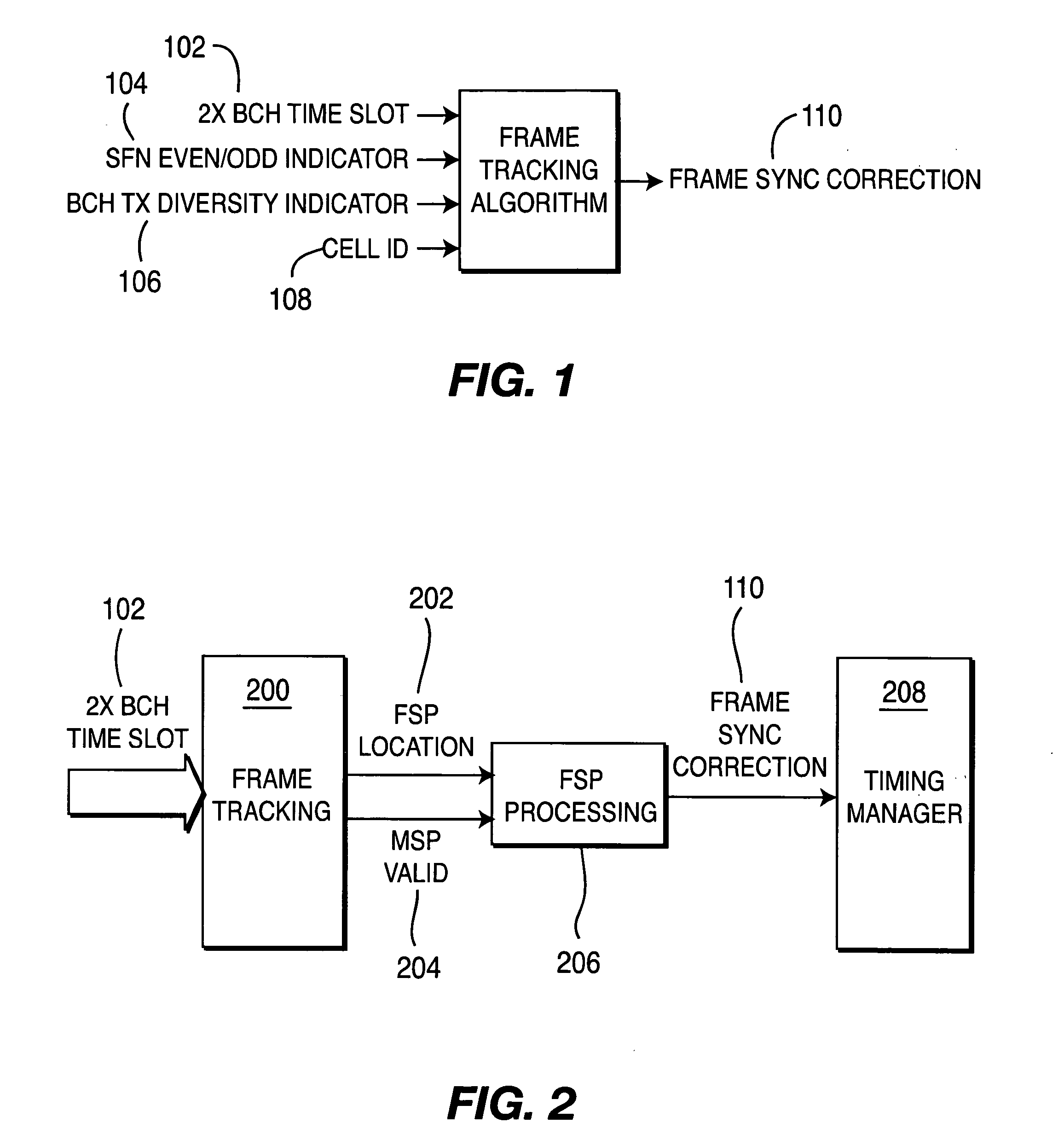Efficient frame tracking in mobile receivers
a mobile receiver and frame tracking technology, applied in wireless communication, electromagnetic wave modulation, synchronisation arrangement, etc., can solve the problems of cs not being able to detect the fsp successfully under multipath fading channel conditions, reducing propagation delay, and reducing accuracy, so as to enhance the channel estimation of the received multipath signal and improve accuracy. , the effect of fast changing profiles
- Summary
- Abstract
- Description
- Claims
- Application Information
AI Technical Summary
Benefits of technology
Problems solved by technology
Method used
Image
Examples
Embodiment Construction
[0027] Although the embodiments are described hereinafter in conjunction with a third generation partnership program (3GPP) wideband code division multiple access (W-CDMA) system utilizing the 3.84 Mcps time division duplex mode (TDD), the embodiments are applicable to any hybrid code division multiple access (CDMA) / time division multiple access (TDMA) communication system, such as TD-SCDMA. Additionally, the embodiments are applicable to CDMA systems, in general, such as the proposed frequency division duplex (FDD) mode of 3GPP W-CDMA or 3GPP2 CDMA 2000.
[0028] Frame tracking (FT) is a process to maintain the downlink (DL) frame synchronization of the wireless transmit / receive unit (WTRU). Since frame synchronization is based on the location of the first significant path (FSP), the FT process is responsible for updating the FSP. The FT process will commence after initial cell search (CS) is completed and automatic frequency control (AFC) has converged. Afterwards, it runs periodica...
PUM
 Login to View More
Login to View More Abstract
Description
Claims
Application Information
 Login to View More
Login to View More - R&D
- Intellectual Property
- Life Sciences
- Materials
- Tech Scout
- Unparalleled Data Quality
- Higher Quality Content
- 60% Fewer Hallucinations
Browse by: Latest US Patents, China's latest patents, Technical Efficacy Thesaurus, Application Domain, Technology Topic, Popular Technical Reports.
© 2025 PatSnap. All rights reserved.Legal|Privacy policy|Modern Slavery Act Transparency Statement|Sitemap|About US| Contact US: help@patsnap.com



